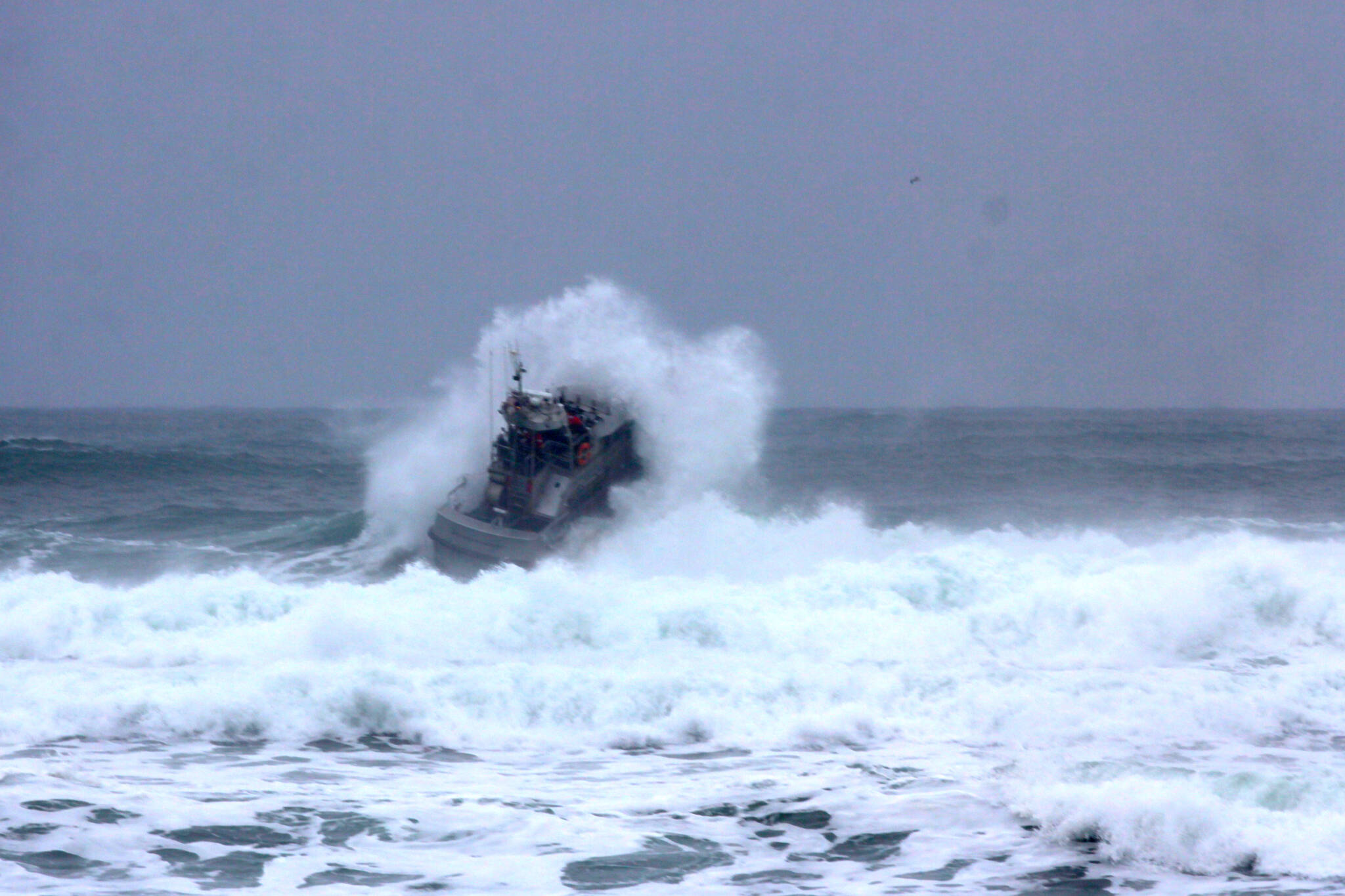Whipping wind and frigid, stinging rain set against the low thunder of breakers smashing into the beach are scarcely what most would call an ideal day at the shore, but the two Coast Guard vessels plunging through the waves Friday morning were clearly not there for an idyllic meander.
The two vessels of Coast Guard Station Grays Harbor took to the surf to hone their proficiency in the conditions where they’d be needed most, said surfman Petty Officer 2nd Class Victoria True.
“It’s so the boat drivers and the crew are all proficient enough to run in and save someone,” True said in a phone interview on Monday. “The beach zones are some of the more challenging as far as surf conditions (are concerned). If someone is on the beach and gets swept out by a rip current, that’s where they’re gonna end up.”
[Central Grays Harbor police departments to hold citizen’s academy]
Waves can begin breaking as far as a mile offshore in the right conditions, True said. The waves Friday were about 10 to 12 feet, occasionally hitting 14 feet, True said.
“We try to train in anywhere from about 12 to 15 foot seas,” True said. “That boat can actually operate in 20-foot breaking seas or 30-foot seas.”
The surf zone can be the most demanding to operate in for boat crews, True said, so the boat crews from the station take every opportunity they can to train when the weather permits. Boat crews can get underway from first receiving a call to clearing moorings in under five minutes, True said.
“It kind of depends on the currents, whether it’s ebbing or flooding,” True said. “It’s a very dynamic situation which is why any time we get a call about a person or a boat in the surf zone, we take it very seriously.”
On Friday, both vessels were operating with five Coast Guardsmen aboard, True said. The 47-foot vessels are specifically designed to operate in the crushing violence of the surf, capable of self-righting in about 8 to 12 seconds.
“Those in particular are the 47-foot motor lifeboats. They’ve truly been in service since about 1998. They’re all aluminum. They’re fully rollover capable,” True said. “They’re specially designed to operate in those conditions.”
The station gets about half a dozen calls for rescues specifically in the surf each year, True said, and they train for it every chance they get, gaining proficiency in the rough seas.
“It was a great day,” True said. “We try to take every opportunity we can.”
Contact reporter Michael S. Lockett at 757-621-1197 or mlockett@thedailyworld.com.



